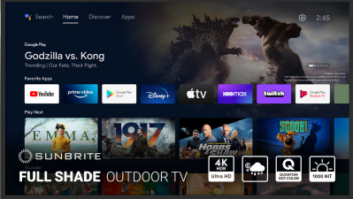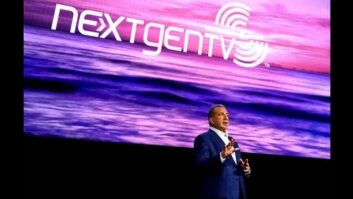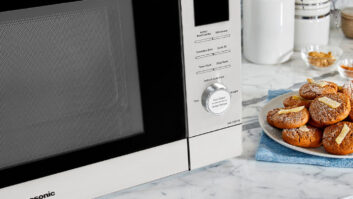Chiba City, Japan – Panasonic’s 50-inch FullHD 3-D
plasma display was one of several themes – including eco-technology and
networking in the home and beyond – being highlighted at its booth at CEATEC
Japan 2009, held through Oct. 10 at the Makuhari Messe.
Panasonic emphasized its ecological products
throughout the home, as well as its Viera Link networking that connects the TV
to a wide variety of electronics and appliances in the home, car and all areas
of life.

Those themes were also detailed in the opening day
keynote on Tuesday by Fumio Ohtsubo, president of Panasonic.
Panasonic’s prototype 50-inch 1080p 3-D plasma
display, which uses active shutter glasses that enable the viewing of
theater-quality images, is set to reach the market next year. No pricing
information was offered, but during a press seminar on the technology, Panasonic
executives said it would be tagged for a consumer audience. Possible screen
sizes have not been decided upon as yet.
The company noted that its new high-speed 3-D drive
technology, which Panasonic claims enables rapid illumination of pixels while
maintaining brightness, uses crosstalk reduction technology to minimize
double-images that occur when left- and right-eye images are alternately
displayed.
Panasonic highlighted its work with Hollywood studious
to develop its FullHD 3-D technology, which it said works best with plasma
displays.
The company noted that unlike analog TV or HDTV,
broadcasters will not play a key role in introducing the new format. A
3-D-capable Blu-ray Disc drive, also set for next year and also without a
suggested retail as yet, will play the premier role in introducing
3-D.
To reproduce 3-D images, Panasonic uses the FullHD x 2
frame sequential method that displays 1,920 by 1,080-pixel images for the left
and right eyes on the display frame by frame.
Ohtsubo’s CEATEC keynote Tuesday emphasized the
company’s “Eco Ideas” plan to introduce products and systems that will cut
energy consumption for every A/V, IT or appliance used; create technology with
fuel cells and solar power; and store energy – namely electricity – via
lithium-ion batteries.
Comparing this time to the Industrial Revolution of
the 18th century and the Information Revolution of the
20th, Ohtsubo said, “The 21st century needs a great
revolution to realize sustainable growth and break our dependence on
oil.”
He noted that Panasonic must produce “products and
services, and manufacturing must suit the values of the new era – to enrich
lives in a sustainable way.”
Ohtsubo said, “‘Eco’ will be the center of all our
activities” from now on. That will be part of “all of our products and services
offered … and the implementation of business practices that minimize
environmental impact.”
Among the prototypes discussed by Ohtsubo at the
Panasonic booth is an AC/DC hybrid wiring system using electricity from fuel
cells or solar power that will lose less power. An “intelligent” home energy
system management system was shown using mounted sensors to reduce energy waste
and make the home more comfortable. And EVERLEDS LED bulbs are being displayed
that use less energy and are just as effective as today’s traditional
lightbulbs.
Also on display was Viera Link, which, via a Viera TV,
can share programming and information in the kitchen, the den, bedroom, study
room and outdoors via car navigation systems, mobile phones, Blu-ray decks, home
security products, HD camcorders and digital cameras. Content from Blu-ray, the
Web, cable, satellite or terrestrial broadcasts can be moved and shared that
way.
(For more on Panasonic and CEATEC,
visit www.TWICE.com regularly this week.)












